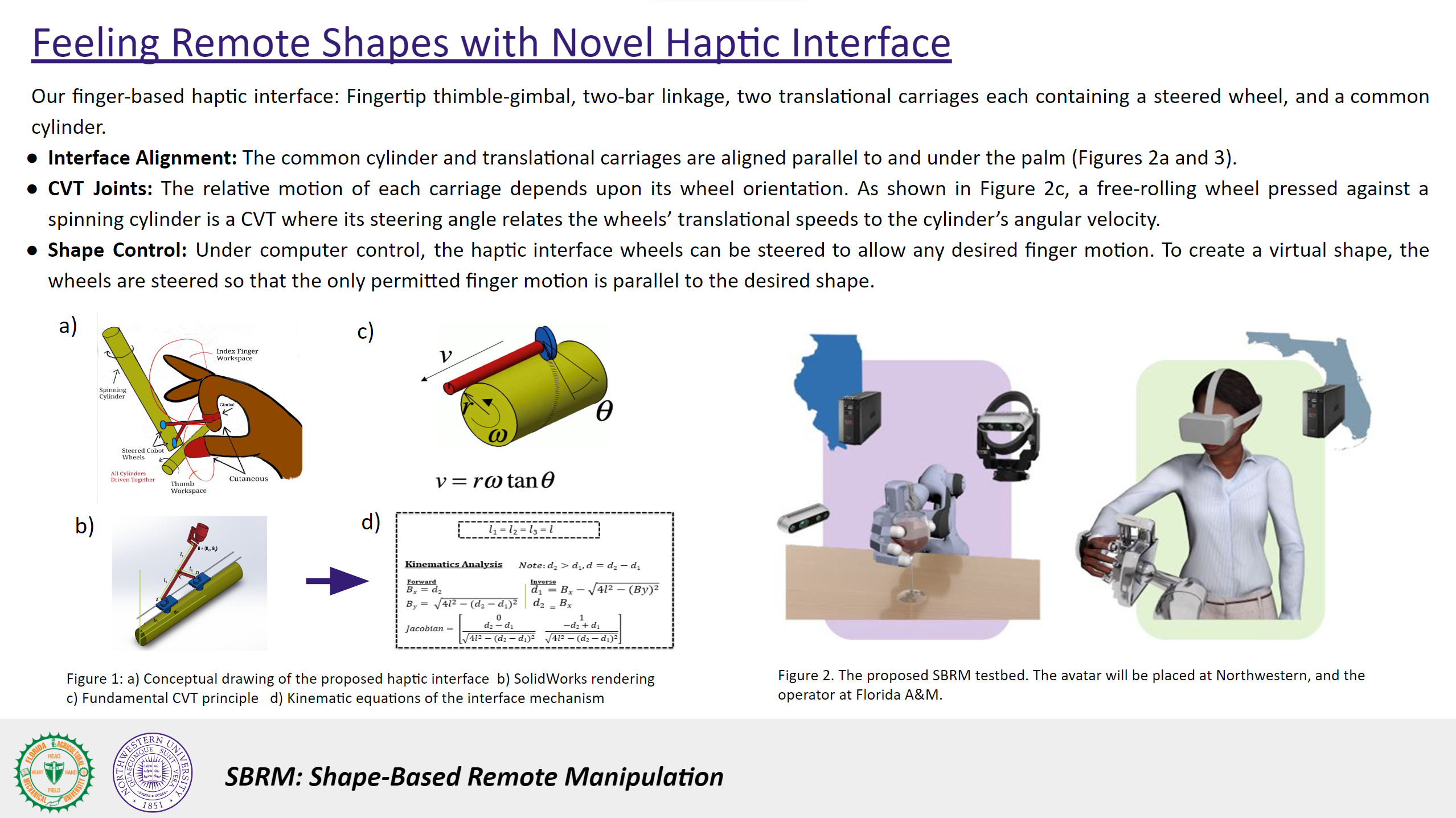Research
While we use phones to talk across a distance and cameras to see things far from us, we do not yet have the means to provide a realistic sensation of touching a distant person or object. To realistically represent distant objects and surfaces, a haptic device must have a high z-width: the ability to render an extensive range of impedances. Impedance is the relationship between force and velocity; in practice, high z-width enables a haptic device to render free space or objects with low mass and stiffness, like when contacting a hard surface like a wall. The major limitation of today’s haptic systems are that they can render low masses or rigid surfaces but cannot precisely render both. This research aims to design and develop a high z-width finger-based haptic device for remote touch applications using a CVT-based haptic interface. When combined with a remote robotic avatar, a user wearing such a haptic interface should be able to feel shapes as if they were touching them with their hand.


